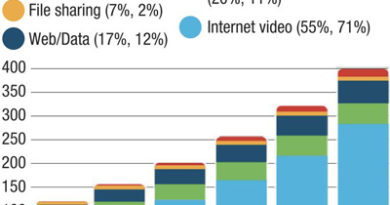Beyond the Cheetah
By Brady Volpe
The cable industry hopes to deliver Internet so fast even your dog can’t catch it
As the demand for high-speed Internet races faster than a cheetah on roller skates, the cable industry faces the daunting task of keeping up with this need while also enhancing its service quality. In this article we’ll look at the current state of DOCSIS 3.1 and 4.0, where the industry is headed in terms of these technologies.
DOCSIS 3.1 is the reigning champ of cable modem standards, boasting vast improvements in bandwidth compared to its older sibling, DOCSIS 3.0. With DOCSIS 3.1, cable operators can offer download speeds of up to a jaw-dropping 10 Gbps and upload speeds of up to 1 Gbps. However, like that one friend who always shows up late, the actual speeds a customer can enjoy depend on factors such as network impairments, the number of subscribers using the network, and various other factors which can be quite difficult to quantify unless you have the proper tools to do so.
DOCSIS 3.1 is an impressive technology with a lot of life left in it, however, there is a new standard hot on its heels with even more capabilities. DOCSIS 4.0, the latest advancement in the field, provides the potential for even faster data transfer rates. Specifically, the extended spectrum (DOCSIS 4.0 FDD) version offers higher upstream splits that lead to quicker upstream speeds (because of the wider upstream RF bandwidth), albeit at a cost to downstream speeds. The 684 MHz/834 MHz split enables 7.5 Gbps for downloads and 5 Gbps for uploads. However, this requires expanding the downstream to 1.8 GHz. Alternatively, the full duplex (FDX) version offers 7.5 Gbps downloads and 6.5 Gbps uploads, together with lower latency. The technology is highly suitable for applications such as online gaming sessions and video conferences with your boss.
But don’t hold your breath just yet. DOCSIS 4.0 is still in the lab, not expected to make its grand debut until late 2024 for most of us. Plus, it requires significant upgrades to existing cable infrastructure, such as swapping out diplex filters, actives, and passive devices, which can be as costly and time-consuming as assembling that new IKEA bookshelf.
So, where is the industry headed with these technologies? While DOCSIS 4.0 certainly has the allure of a shiny new toy, cable operators can’t just twiddle their thumbs waiting for it to arrive. Instead, it’s an opportunity to optimize DOCSIS 3.1 networks, providing the ultimate experience for customers. DOCSIS 3.1 has a lot of life in it and for some cable operators, they have yet to tap its potential. This means turning on more OFDM channels, or maybe the first one depending on where you are in your life cycle. Next are the OFDMA channels which have been known to be a bit ornerier, but hey, there is duct tape for that, and they seem to be under control as long you are on the latest firmware and software. I do strongly recommend putting monitoring in place first… DOCSIS is going to be around for a lot longer than most people think.
In summary, DOCSIS 3.1 has a lot of potential and we haven’t even scratched the surface yet. Once operators upgrade to 204 MHz upstreams, end users can enjoy impressive downstream and upstream speeds. With DOCSIS 3.1, upload speeds of up to 1 Gbps are achievable. However, DOCSIS 4.0 takes it up a notch and allows for even faster upload speeds if necessary. Both DOCSIS versions support 10 Gbps download speeds or more, giving ample capacity for subscribers to avoid any congestion issues and ensure top-notch quality of service. It’s exciting to have these options readily available to us and we look forward to seeing the cable industry continue to push the boundaries of what’s possible.
 Brady S. Volpe
Brady S. Volpe
brady.volpe@volpefirm.com
Brady Volpe is Founder of The Volpe Firm, Inc and Nimble This LLC. He has over 25 years of broadband cable and telecommunications industry experience specializing in RF, DOCSIS, PNM, and Internet Protocol. Mr. Volpe has been providing a wide range of troubleshooting, design solutions, services and seminars for cable operators and broadband companies specializing in DOCSIS, System Design, PNM, and Troubleshooting. He is a highly respected published speaker, both domestically and internationally. He also hosts a popular industry YouTube and Podcast – “Get Your Tech On“. Mr. Volpe has a MSEE with honors from The Johns Hopkins University Applied Physics Laboratory and a BSEE from Penn State University.
Image by author




